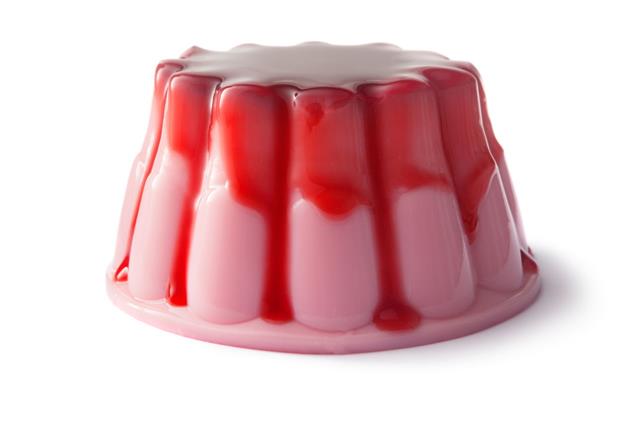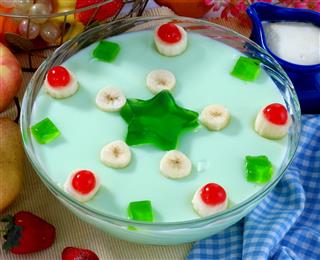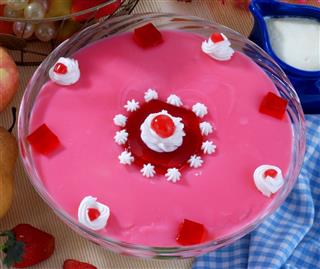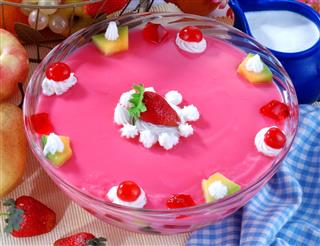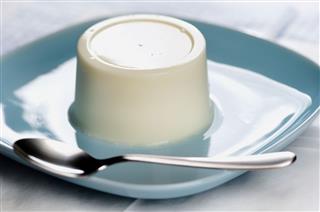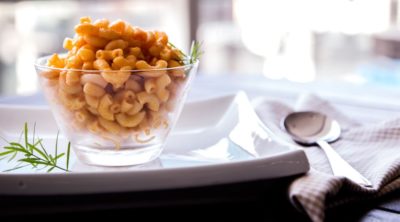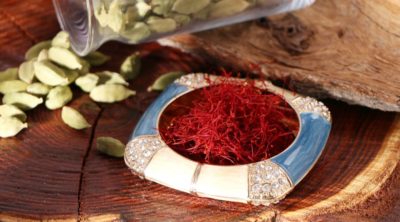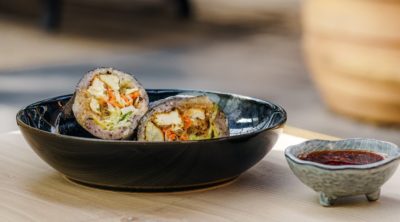
Gelatin is a protein derived from the hydrolysis of the connective tissues of animals. It has found a wide range of applications in the manufacturing of food, cosmetics, and pharmaceuticals. Find out what can be used to substitute this product in a recipe, through this Tastessence write-up.
Gelatin is a protein, which is derived from the partial hydrolsis of connective tissues. It is usually a brittle, colorless, and translucent solid that melts when heated, but becomes solid on cooling. Commercially, it is produced from the connective tissues, bones, and organs of horses, cattle, and pigs. It is mainly used as a food additive, and also for manufacturing cosmetics and pharmaceuticals.
It is also used in photography. Food products that usually contain gelatin are, gelatin desserts, certain candies, trifles, aspic, certain low-fat yogurt, jams, margarine, cream cheese, and marshmallows. Gelatin is available in different grades, which can be used as a gelling agent, stabilizer, and as a thickener. As this product is derived from animal tissues and organs, vegetarians look for its substitutes that can be used in cooking. The following are some products that can replace gelatin in a recipe.
Replacing Gelatin While Cooking
Agar-agar
Agar-agar is a seaweed derivative that becomes gelatinous when heated or dissolved in water. It melts at a comparatively higher temperature. Agar-agar, also known as agar, kanten, and Japanese moss, is actually a polysaccharide that is derived from the cell wall of certain red algae of the genera Gelidium. More commonly, the species Gelidium amansii is used for producing agar commercially.
Agar-agar needs to be soaked in water or liquid for a few minutes, and then boiled until it dissolves completely. The liquid should be stirred frequently while boiling. On cooling, agar-agar become gelatinous, and then it can be used as a thickening agent in making ice-creams, desserts, jellies, and soups.
Arrowroot
Arrowroot or Maranta arundinacea is actually a perennial herb that thrives in rainforests. It is also the name of the edible starchy powder, which is obtained from the tuber or rhizome of the African arrowroot. It is basically used to make fruit gels. It can also be used as a thickener for making sauces, especially fruits sauces. If added to ice-creams, arrowroot can help prevent the formation of ice crystals. It is also added to puddings, cakes, hot sauces, biscuits, and Korean noodles.
Guar Gum
Guar gum is obtained from guar beans or cluster beans. To prepare guar gum, guar seeds are milled and then screened after removing the husk. Guar gum comes in the form of a coarse or fine white powder, and it can be used as a stabilizer in dairy products, like cheese and ice-creams, and also in cold-meat processing. When added to ice-creams, it can prevent the formation of ice crystals. Guar gum is actually a polysaccharide of galactose and mannose. It can be used as an emulsifier and as a stabilizer.
Kudzu
Kudzu is the name of the plant Pueraria lobata, which is a member of the genus Pueraria and the family, Fabaceae. The plant possess tuberous roots that are used to make a starchy powder that can be used as a thickener.
Sometimes, xanthan gum (a corn extract) and certain goundnuts are also used to substitute gelatin in various food items. In addition to these, vegetarians can use certain kosher gelatin, which are not made from animal tissues or organs. However, some kosher gelatin can contain animal products.

